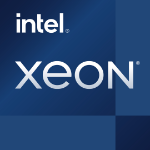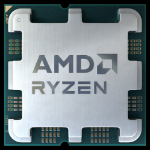We use cookies to make your experience better.
To comply with the new e-Privacy directive, you agree to the privacy policy and our use of cookies.
AMD Ryzen 9 7900 processor 3.7 GHz 64 MB L3 Box
SKU
100-100000590BOX
£381.17
£317.64
In stock
AM5, 12 cores, 24 threads, 3.7 GHz base clock, 5.4 GHz boost clock, 64 MB cache, 65 W
Category: Processors
| Processor socket | Socket AM5 |
|---|---|
| Box | Yes |
| Processor cores | 12 |
| Processor family | AMD Ryzen 9 |
| SKU | 100-100000590BOX |
| EAN | 0730143314466 |
| Manufacturer | AMD |
| Availability | Y |
| Product Family | Ryzen |
| Product Series | 9 |
Serious Performance for Gamers and Creators
Enjoy serious speed and the ultimate power efficiency for gaming and creating. This processor comes fully unlocked, overclockable, and will remain cool and quiet with an included AMD Wraith Prism cooler with RGB LED lighting.
Enjoy serious speed and the ultimate power efficiency for gaming and creating. This processor comes fully unlocked, overclockable, and will remain cool and quiet with an included AMD Wraith Prism cooler with RGB LED lighting.
| Processor | |
|---|---|
| Processor generation | AMD Ryzen 7000 Series |
| Processor base frequency | 3.7 GHz |
| Processor manufacturer | AMD |
| Cooler included | Yes |
| Thermal Design Power (TDP) | 65 W |
| Processor cache | 64 MB |
| Processor model | 7900 |
| Processor threads | 24 |
| Processor operating modes | 64-bit |
| Processor boost frequency | 5.4 GHz |
| Processor lithography | 5 nm |
| Processor family | AMD Ryzen™ 9 |
| Processor cores | 12 |
| Processor socket | Socket AM5 |
| Processor cache type | L3 |
| Package type | Box |
| Memory | |
| Memory types supported by processor | DDR5-SDRAM |
| Memory clock speeds supported by processor | 3600,5200 MHz |
| Memory channels | Dual-channel |
| ECC | Yes |
| Non-ECC | Yes |
| Graphics | |
| Discrete graphics card | No |
| On-board graphics card model | AMD Radeon Graphics |
| On-board graphics card | Yes |
| On-board graphics card base frequency | 2200 MHz |
| Discrete graphics card model | Not available |
| Power | |
|---|---|
| Thermal Design Power (TDP) | 65 W |
| Technical details | |
| PCI Express slots version | 5.0 |
| Compatible operating systems | Windows 11/10 64-bit, RHEL x86 64-bit, Ubuntu x86 64-bit |
| Thermal Design Power (TDP) | 65 W |
| Market segment | Desktop |
| Processor cache type | L3 |
| Features | |
| Thermal Design Power (TDP) | 65 W |
| PCI Express slots version | 5.0 |
| Compatible operating systems | Windows 11/10 64-bit, RHEL x86 64-bit, Ubuntu x86 64-bit |
| Market segment | Desktop |
| Packaging data | |
| Package type | Box |
You may also be interested in
| Product |
 AMD Ryzen 9 7900 processor 3.7 GHz 64...
AMD Ryzen 9 7900 processor 3.7 GHz 64...
£381.17
£317.64
|

Bestseller
AMD Ryzen 7 5700G processor 3.8 GHz 16...
£322.58
£268.82
|

Popular
Intel Xeon E-2356G processor 3.2 GHz 1...
£340.56
£283.80
|

Hot Product
AMD Ryzen 7 7700X processor 4.5 GHz 32...
£373.56
£311.30
|

Recommended
AMD Ryzen 9 7900X processor 4.7 GHz 64...
£494.84
£412.37
|
 AMD Ryzen 9 7900X processor 4.7 GHz 64...
AMD Ryzen 9 7900X processor 4.7 GHz 64...
£495.88
£413.23
|
|---|---|---|---|---|---|---|
| SKU |
100-100000590BOX
|
100-100000263BOX
|
CM8070804495016
|
100-100000591WOF
|
100-100000589WOF
|
100-000000589
|
| Manufacturer |
AMD
|
AMD
|
Intel
|
AMD
|
AMD
|
AMD
|
| Processor family |
AMD Ryzen 9
|
AMD Ryzen 7
|
Intel Xeon E
|
AMD Ryzen 7
|
AMD Ryzen 9
|
AMD Ryzen 9
|
| Discrete graphics card |
N
|
N
|
N
|
N
|
N
|
N
|
| Processor lithography |
up to 22nm
|
up to 22nm
|
up to 22nm
|
N/A
|
N/A
|
up to 22nm
|
| Cooler included |
Y
|
Y
|
N
|
N
|
N
|
N
|
| On-board graphics card |
Y
|
Y
|
Y
|
Y
|
Y
|
Y
|
| Processor socket |
Socket AM5
|
Socket AM4
|
LGA 1200 (Socket H5)
|
Socket AM5
|
Socket AM5
|
Socket AM5
|
| Processor cores |
12
|
8
|
6
|
8
|
12
|
12
|
| Package type |
Box
|
Box
|
Tray
|
Box
|
Box
|
Tray
|


Please complete your information below to login.
Sign In
Create New Account